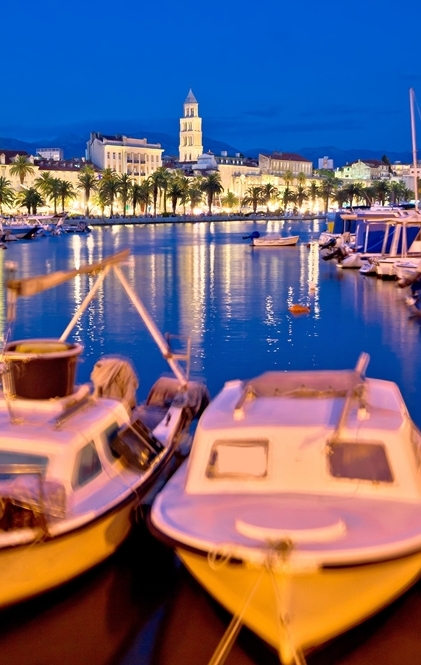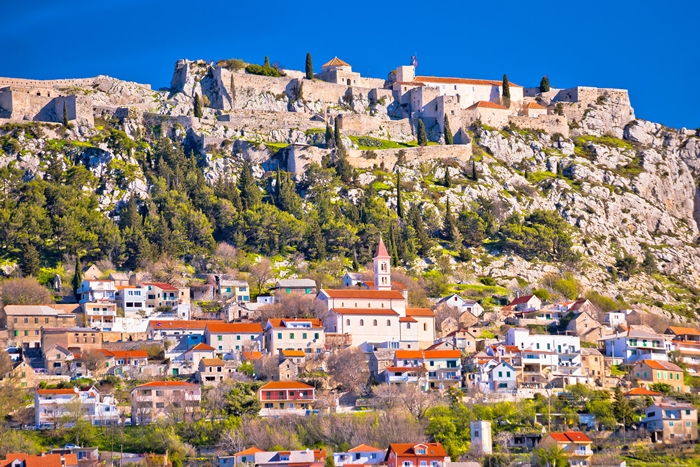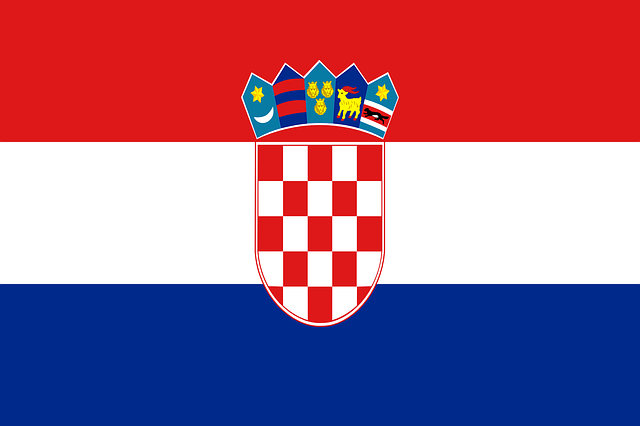City of Split metropolitan area
 Context
Context
The Split-Dalmatian County (SDC) is one of 21 Croatian counties (of which six belong to the Adriatic region, situated in the middle part of the Adriatic coast). SDC has a land surface of 4,540 km2 and 454,798 inhabitants (11% of Croatian population), who live in 16 towns and 39 municipalities. The population density in the SDC is 101 inhabitants per km2.
Its biggest city and administrative centre is Split, with approximately 190,000 inhabitants living in the city itself, and more than 300,000 in its metropolitan area. The metropolitan area of the city of Split consists of 13 cities and municipalities, out of which 7 of them, i.e. Split, Trogir, Kaštela, Solin, Klis, Dugopolje and Sinj make the proposed Living Lab.
In 2019 Split itself realized ca. 944,465 arrivals (4.8 % of the Croatian total) and 2,757,305 tourist overnights (3.02 % of the Croatian total). The Living lab territory realized 1,313,271 overnights in total, out of which the four coastal municipalities (i.e. Split,Trogir, Kaštela and Solin) realized over 95 % of the LL’s total, while the three located in the Hinterland area still have modest results in terms of tourism demand (less than 5 %) and overall tourism development
 Cultural tourism products, motivations and existing gap
Cultural tourism products, motivations and existing gap

Over the centuries, the territory of the LL and the whole of SDC was under the influence of different religions and cultures, which became manifested in various languages, traditions and architecture. These elements represent not only tangible and intangible heritage, but also significant tourist resources. The wider territory of the SDC is well-known for its cultural properties inscribed on the World Heritage List: The Historical Complex of Split with the Diocletian’s Palace, Historic City of Trogir, and Stari Grad Plain on the island of Hvar (2008). The Representative List of the Intangible Cultural Heritage of Humanity includes: Procession ‘Za Krizen’ (‘Following the cross’) on the island of Hvar; Sinjska Alka, a knight’s tournament in Sinj and Nijemo kolo, silent circle dance, both in the Dalmatian Hinterland; Klapa multipart singing of Dalmatia and Mediterranean diet. The two of the UNESCO listed sites are located in the territory of the LL (i.e. the Split and Trogir historical cores), as well as three out of four intangible heritage properties (Sinjska Alka game, Klapa multipart singing of Dalmatia and Mediterranean diet). Moreover, the analysis of the cultural tourism resources in the SDC, undertaken in the Development Plan of SDC (2009), has led to the identification of approximately 40 archaeological sites, 35 urban and urban-rural entities, 160 rural entities, 80 sacral buildings, 60 fortresses and forts, around 40 castles, palaces and mansions, approximately 50 museums, galleries and collections and 50 cultural events. In addition, there is also modern cultural production, concentrated in the County’s larger cities, especially Split.
 Cultural tourism strategies
Cultural tourism strategies
The future development of the LL’s cultural tourism is based on:
- Globally important cultural heritage along the coast, that has been recognised through inscription on the World Heritage List and has already become an internationally known tourist attraction;
- The huge concentration of cultural-historical heritage in urban cores;
- An enormous wealth of material and immaterial heritage in the Hinterland that still waits for its recognition and tourism valorisation.
 Lab goals
Lab goals
Taking into the account the huge gaps between the Coastal Strip and the Hinterland in terms of overall economic activity, tourism and population density, through the Lab different stakeholders will be brought together to create a common vision on cultural tourism development. Cultural assets from both the Coastal Strip and Hinterland will be turned into integrated cultural tourism products.
Another goal is to develop (more) cultural tourism products in the Hinterland to diminish seasonal and spatial pressures on the Coastal Strip (especially Split and Trogir), thus contributing to the sustainability of the Coastal Strip.
For those purposes, the goals of the Lab will be aimed at, among other things, reducing knowledge gaps of important stakeholders in the area of:

- Tourism and specifically sustainable tourism development;
- Strategic planning;
- Monitoring of the impacts of tourism development;
- Marketing issues (above all, how to recognize importance and how to use cultural assets in developing tourism products);
- Partnership and cooperation;
- Risk management.
 Activities and innovations being developed
Activities and innovations being developed
- Bringing together critical stakeholders to create a shared vision of sustainable cultural tourism;
- Raise awareness of the potential of tangible and intangible cultural heritage;
- Identify challenges, determine the priorities and co-design a roadmap to a more sustainable, inclusive and resilient future;
- Detect various risks and establish a practical approach to monitor the sustainability and resilience of cultural tourism destination;
- Co-design adequate solutions to mitigate critical challenges in the destination.
The desired long-term objective in Split Living Lab is a more sustainable year-round cultural tourism, connecting coastal and rural areas and reducing high seasonality and spatial pressures in the urban communities of the coastal strip. We aim to inspire sustainable cultural tourism to support the conservation of cultural assets and the development of local communities in an innovative and community-based approach. Within the SmartCulTour Living Lab, the direct intervention to be tested relates to developing tailored educational programmes to support capacity development and awareness-raising of relevant stakeholders involved in cultural tourism development.
 Stakeholders
Stakeholders
Living Lab Split is a collaborative effort of the public and private sector, supported by the SmartCulTour consortium. Specifically, representatives from the tourism board, city and municipality actors, the Chamber of Commerce, cultural-tourism sectoral organisations, various tourism businesses (heritage hotels, travel agencies, travel guides), cultural institutions (museums, cultural associations), and local community members are represented.



